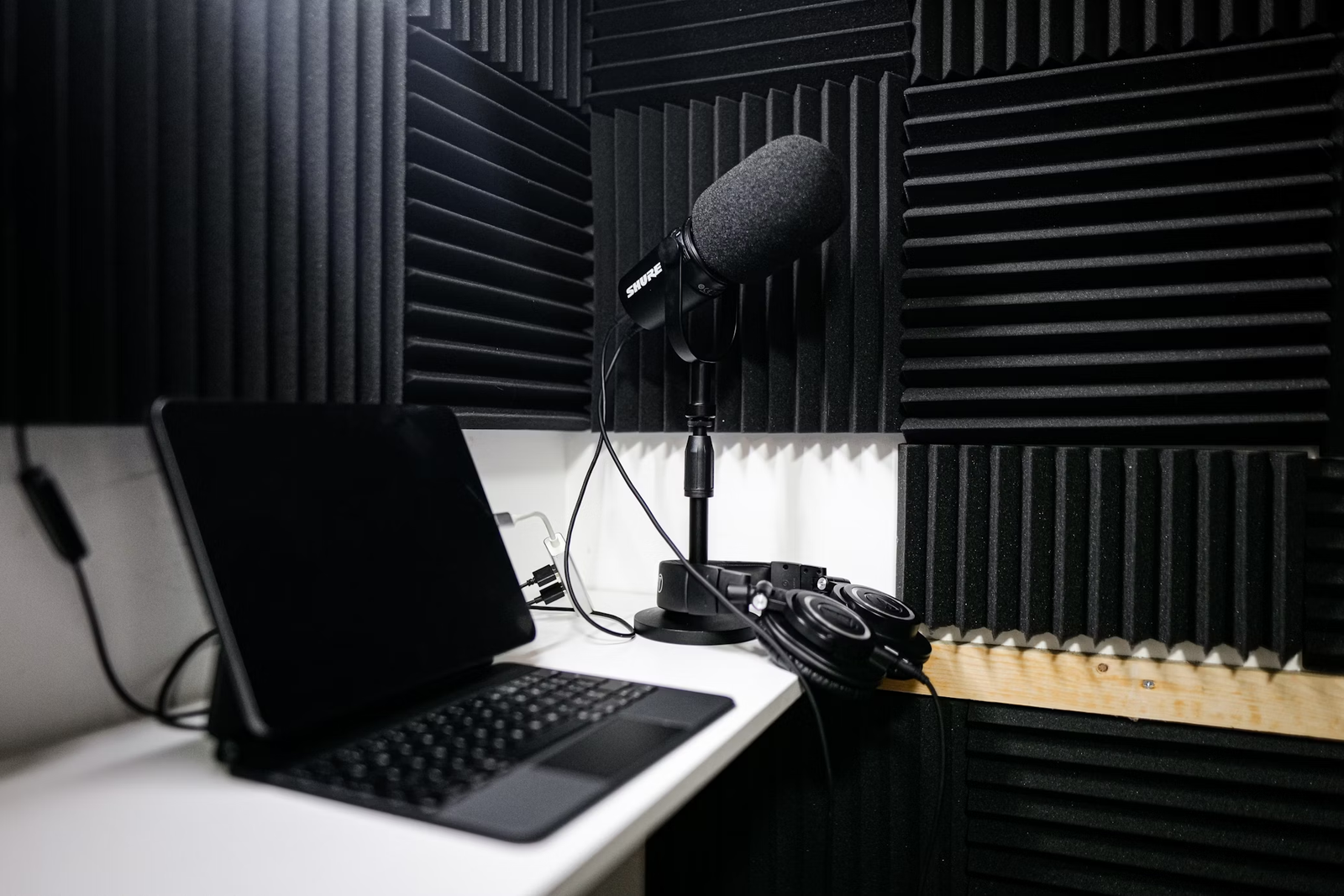When you’re recording a podcast, you want your listeners to hear only your voice and not the noise coming from outside or other rooms. Soundproofing your podcast studio is a smart move to ensure your recordings are clean and professional. Here are some tips to help you minimize noise without needing deep pockets or an engineering degree.
Close the Gaps
Start with the basics: close any gaps where sound can enter or escape. This includes gaps under doors, around windows, and even small openings in walls. Weather stripping or draft stoppers can be used to block gaps under doors, and sealant can be applied to cracks.
Thick Curtains
Heavy curtains can do more than just block light. They can also help absorb sound that comes through windows. The thicker the curtains, the better they will be at stopping sound.
Rugs and Carpets
Hard floors reflect sound, which can lead to echoes in your recordings. Putting down rugs or carpets can help absorb these sounds. If you can, choose a thick rug with a dense weave.
Foam Panels
Foam panels are a popular choice for podcasters looking to improve their studio’s sound. They help to absorb echoes and can be placed on walls or even ceilings. You don’t need to cover every inch, but focus on areas directly opposite your microphone and where sound is likely to bounce.
Bookshelves
A bookshelf full of books isn’t just for show. It can also work as a diffuser for sound waves, breaking them up and reducing echo. Plus, it’s functional and adds character to your space.
DIY Panels
For a more affordable option, you can make your own sound-absorbing panels. Stuffing a wooden frame with rockwool or similar material and covering it with fabric can be just as effective as professional panels.
Acoustic Tiles
Acoustic tiles are similar to foam panels but are often made of denser materials. They’re designed to reduce echo and are available in various sizes and shapes.
Door Seals and Sweeps
The door to your studio is a common way for sound to leak in and out. Use seals around the door frame and a sweep along the bottom to keep noise at bay.
Keep Equipment Quiet
Sometimes the noise comes from the equipment in your studio. Keep your computer and any other electronics that make noise as far away from the microphone as possible, or look for quieter alternatives.
Blankets and Pillows
In a pinch, you can use blankets and pillows to absorb sound. Hang blankets on the walls or pile up pillows in corners to help reduce echoes.
Consider Your Furniture
Big, soft furniture can help absorb sound. Couches, bean bags, and overstuffed chairs are not only comfy but can also improve the acoustics of your room.
Soundproofing your podcast studio doesn’t have to be complicated or expensive. With these tips, you can make a big difference to the sound quality of your recordings, and ensure that your audience hears nothing but your voice and your message.




